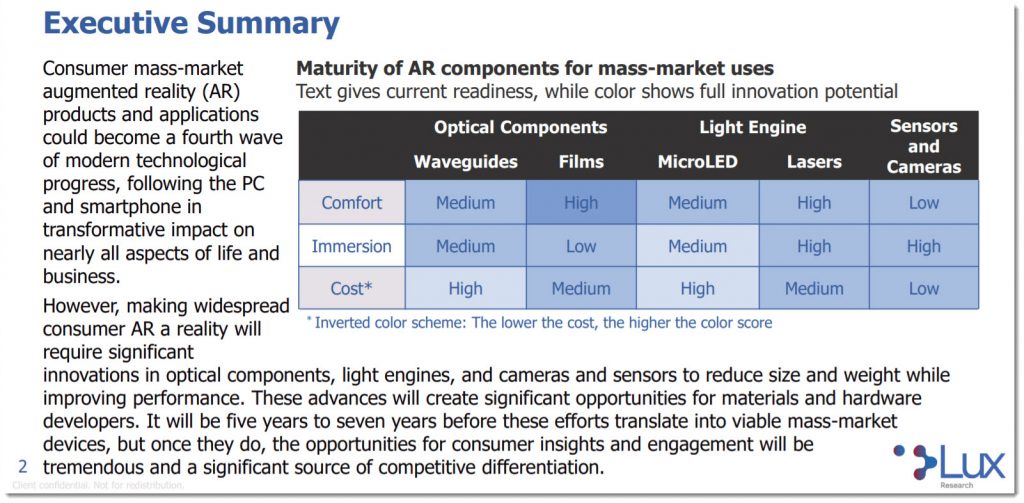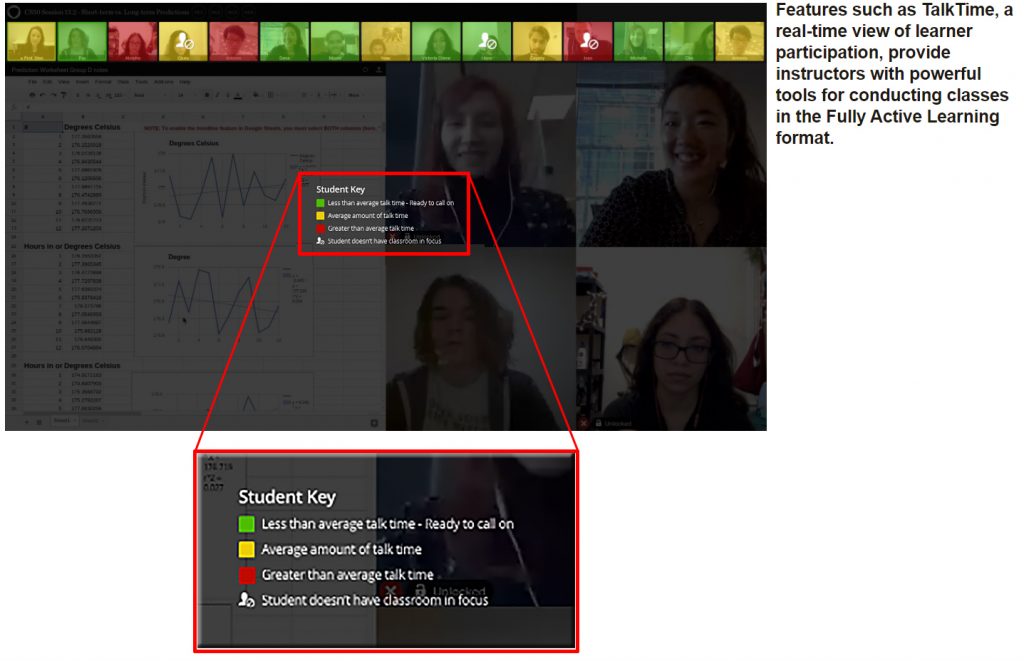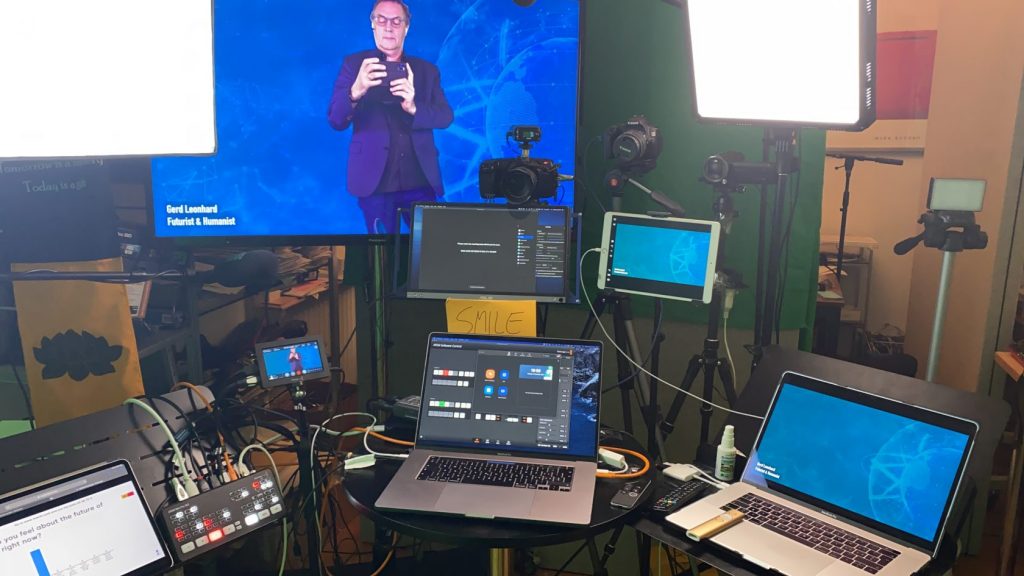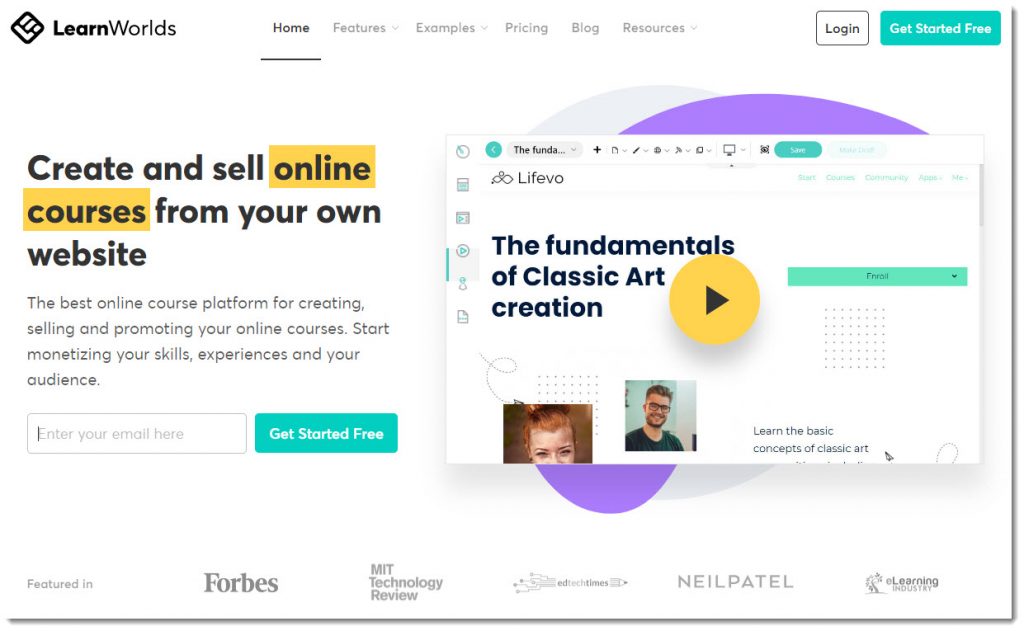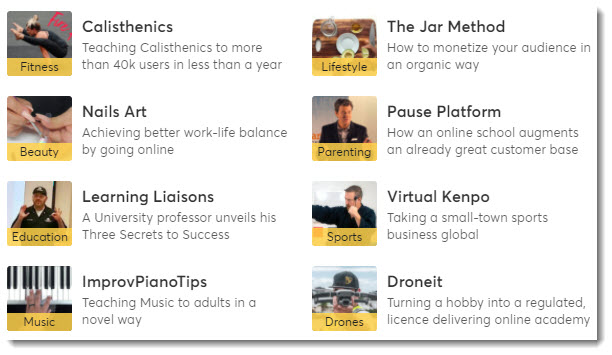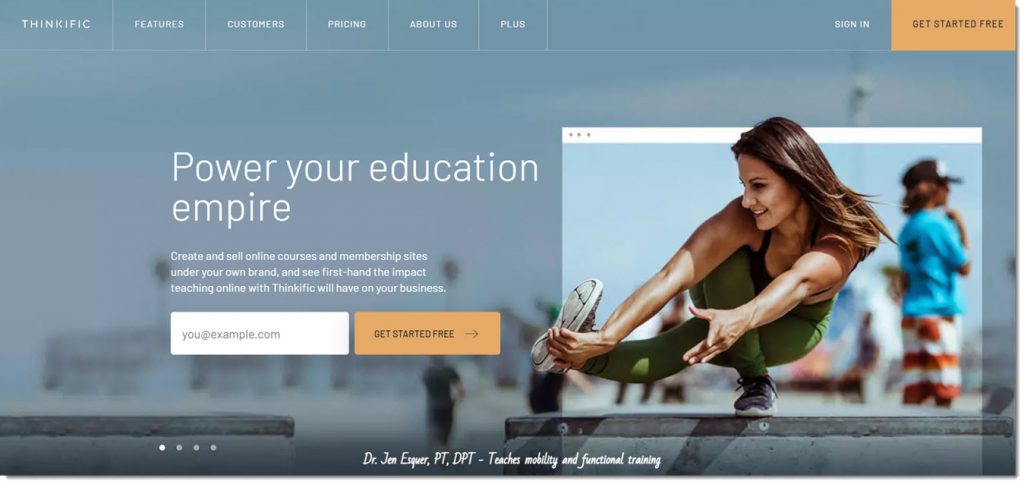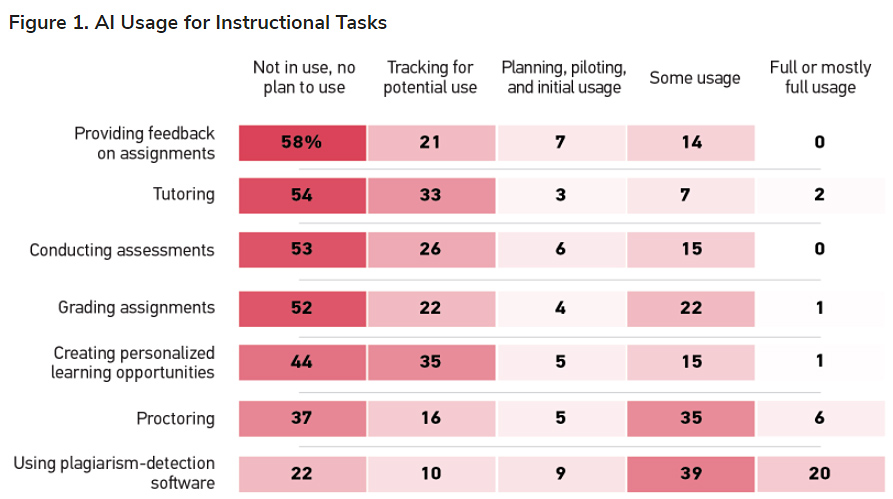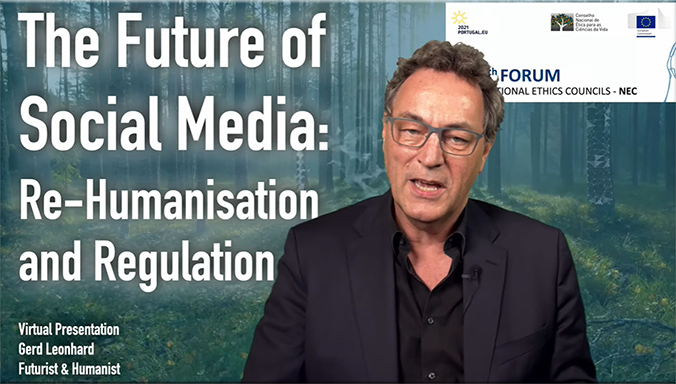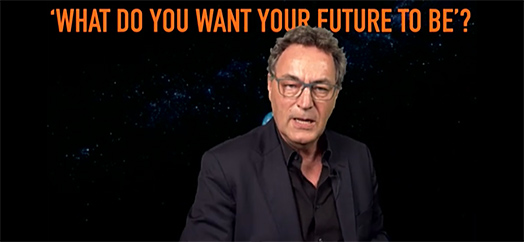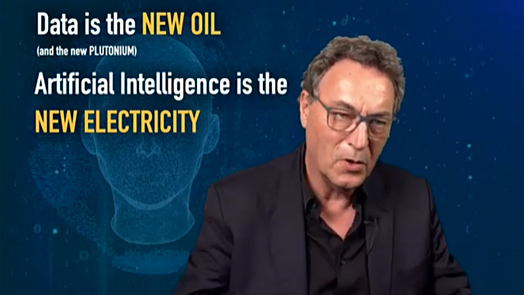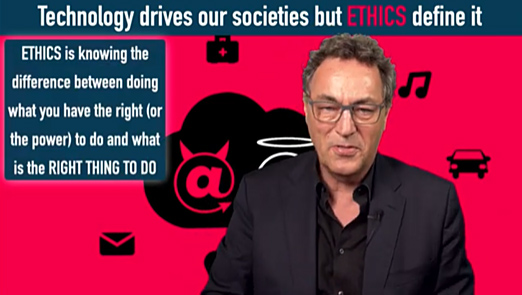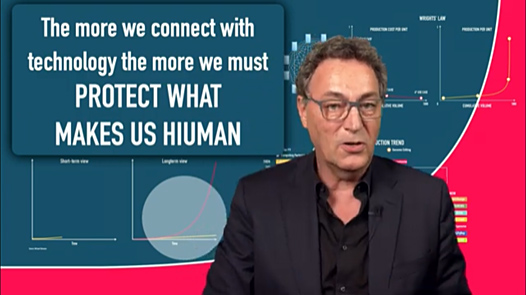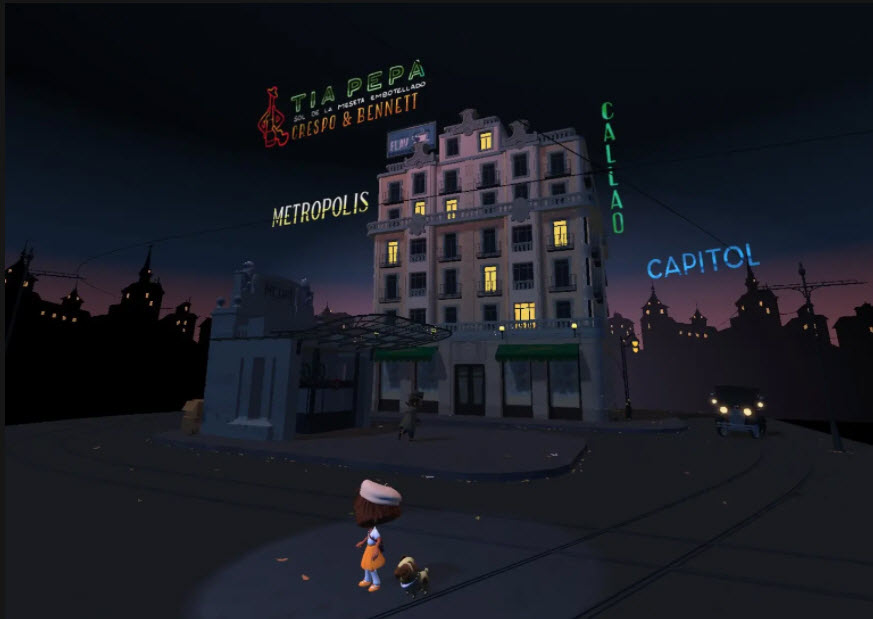The Hardware and Materials Innovations Enabling Consumer Augmented Reality — from luxresearchinc.com by Vladimir Roznyatovskiy
Excerpt:
Consumer mass-market augmented reality (AR) products and applications could become a fourth wave of modern technological progress, following the PC and smartphone in transformative impact on nearly all aspects of life and business.
However, making widespread consumer AR a reality will require significant innovations in optical components, light engines, and cameras and sensors to reduce size and weight while improving performance. These advances will create significant opportunities for materials and hardware developers. It will be five years to seven years before these efforts translate into viable mass-market devices, but once they do, the opportunities for consumer insights and engagement will be tremendous and a significant source of competitive differentiation.










